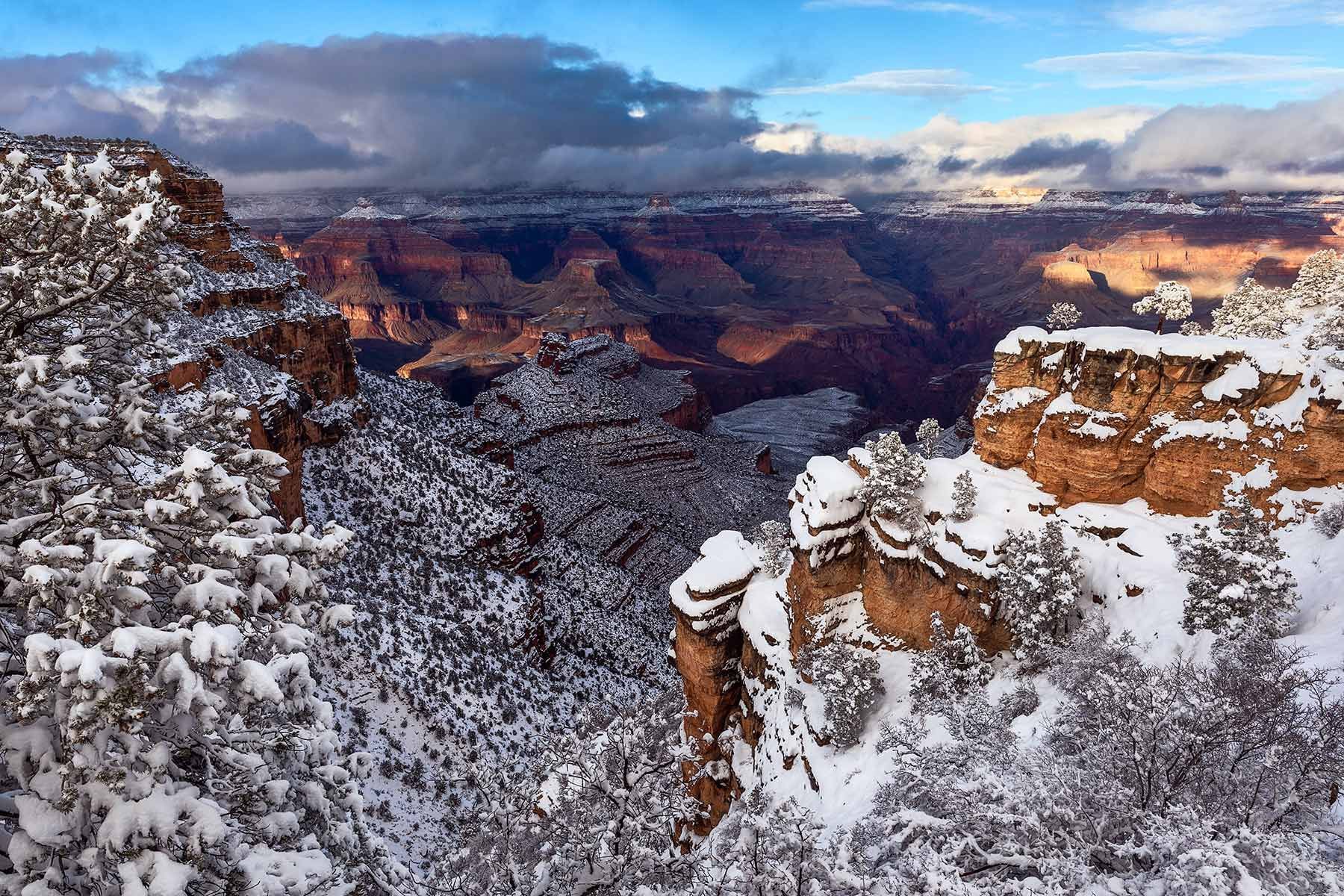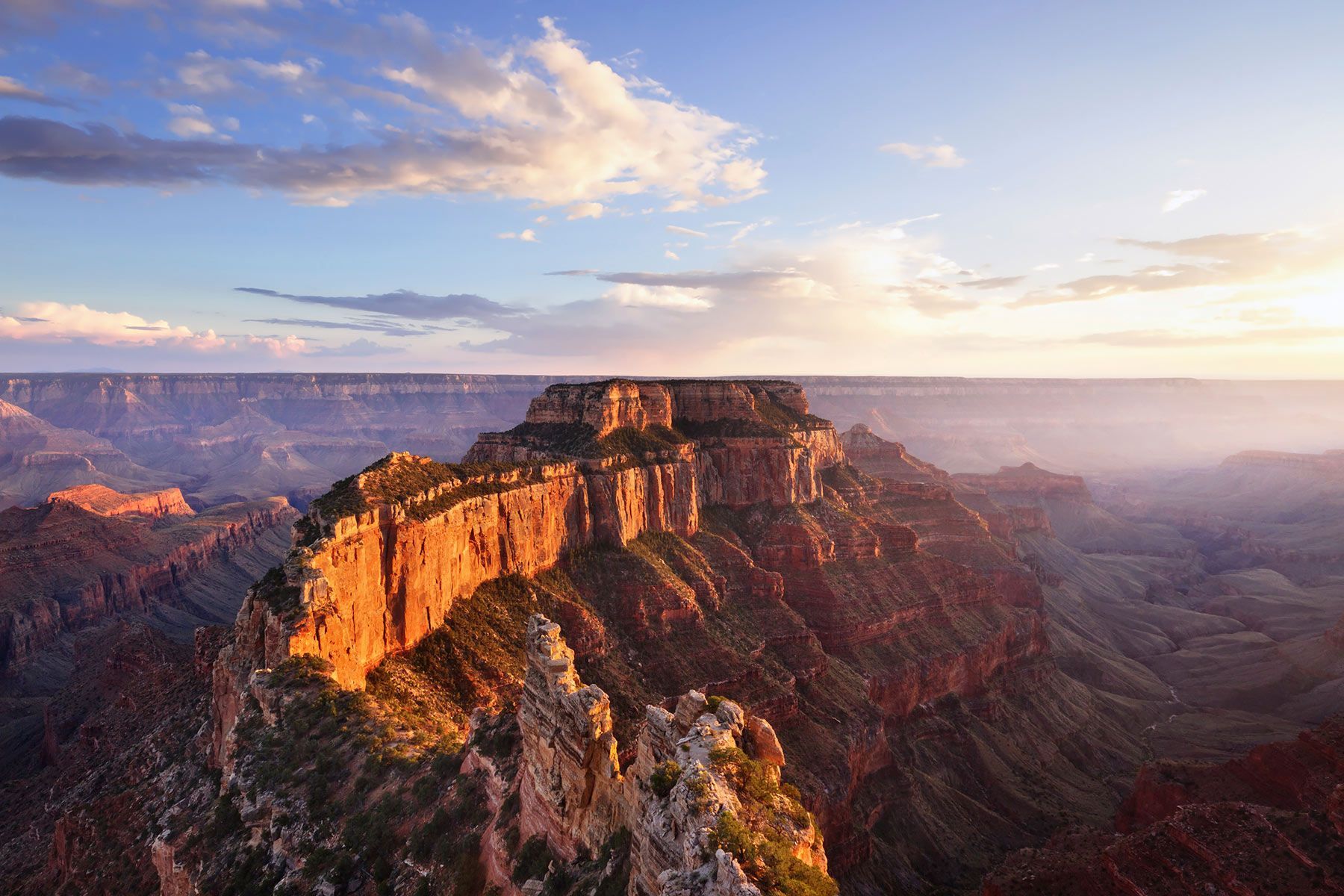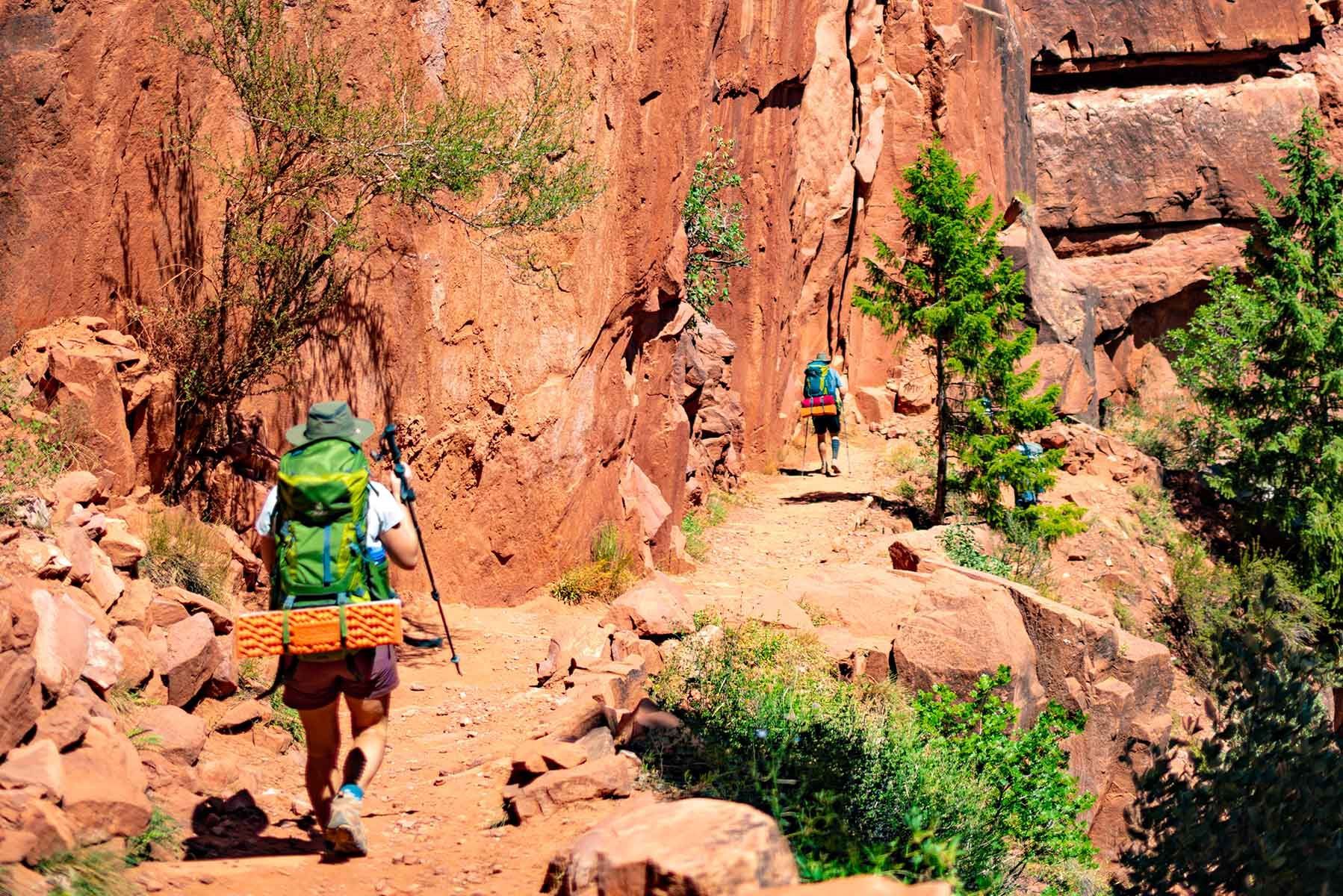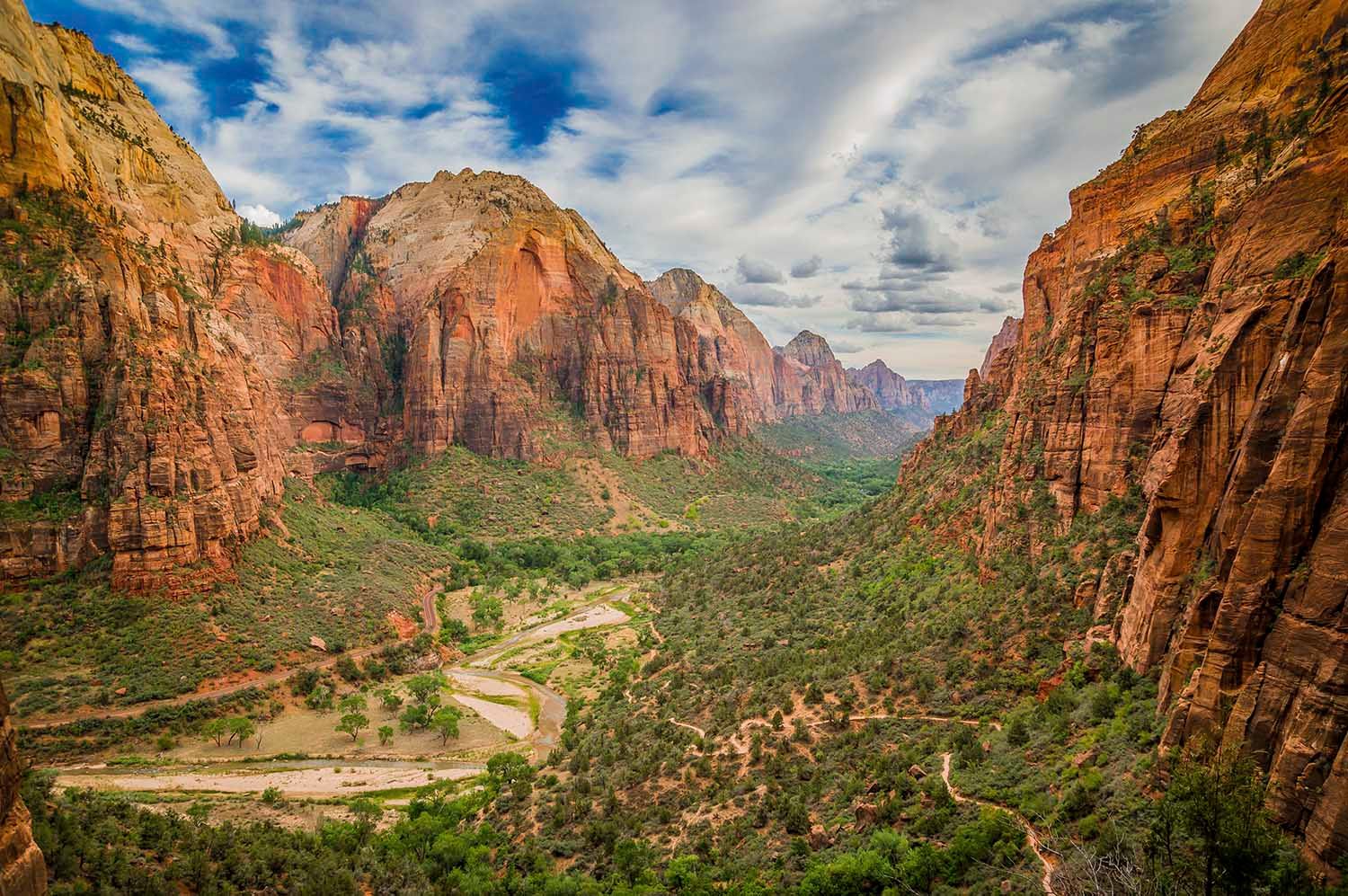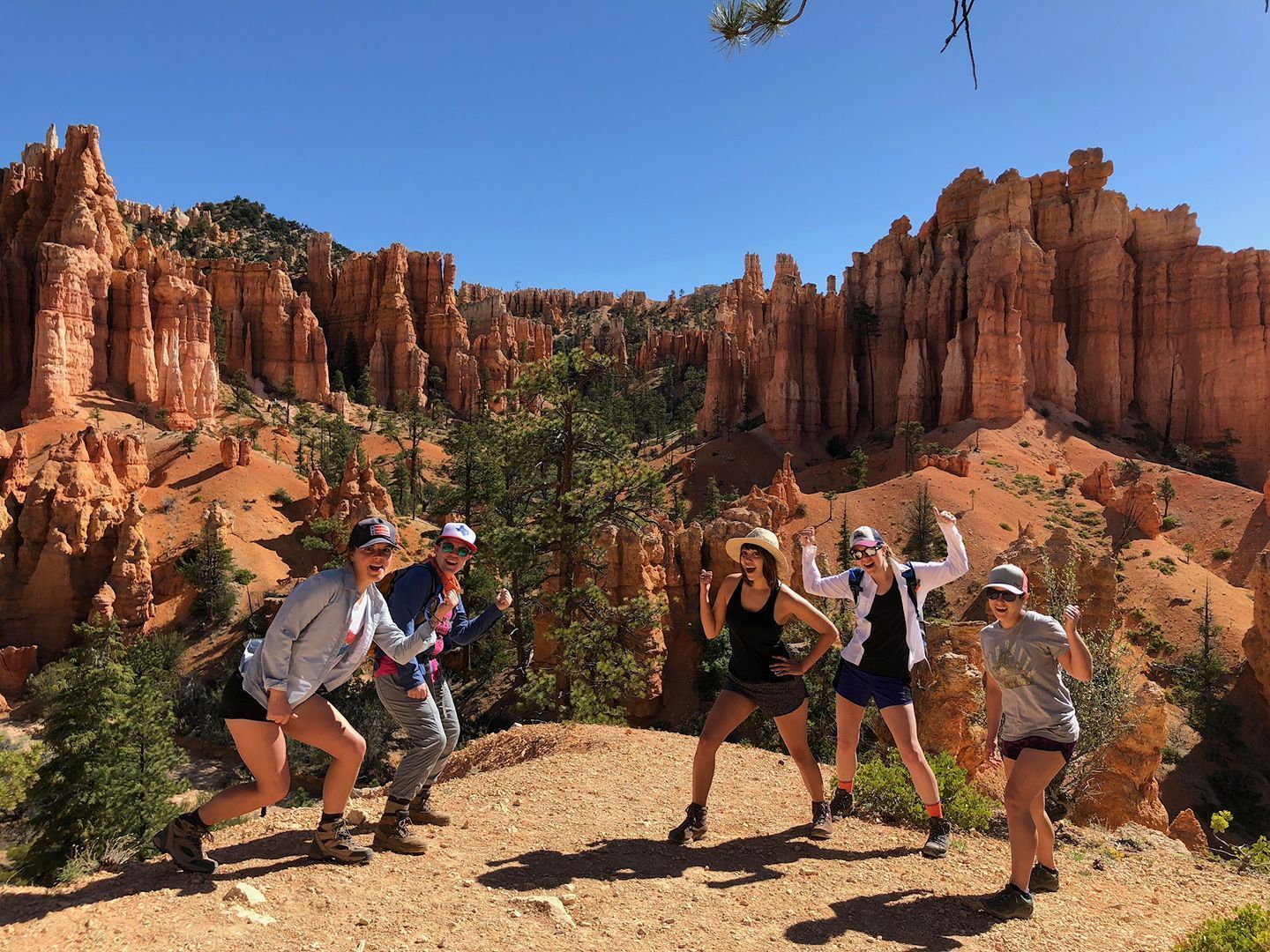A Variety of Ways to See the Grand Canyon By Foot
Key Takeaways
- The Grand Canyon South Rim offers two main hiking experiences — scenic rim walks for panoramic views and below-the-rim trails for immersive canyon exploration.
- The Rim Trail provides an easy, mostly level 13-mile route with shuttle access between viewpoints, perfect for casual hikers seeking Colorado River vistas.
- Bright Angel Trail is the most popular below-the-rim option, featuring water stations, rest houses, and a rewarding hike to Plateau Point known for stunning sunsets.
- The South Kaibab Trail delivers dramatic canyon views early on, with Cedar Ridge and Skeleton Point offering excellent turnaround spots for half- and full-day hikes.
- For seasoned adventurers, the Hermit Trail offers rugged, less-traveled terrain and access to desert springs — ideal for experienced hikers wanting solitude.
- Four Season Guides enhances the experience with guided multi-day Grand Canyon hiking trips, combining the best trails and historic campgrounds for an unforgettable adventure.
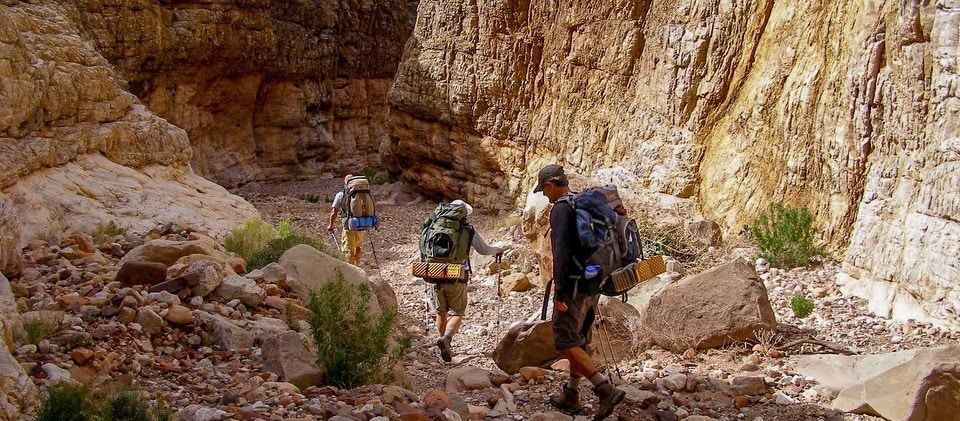
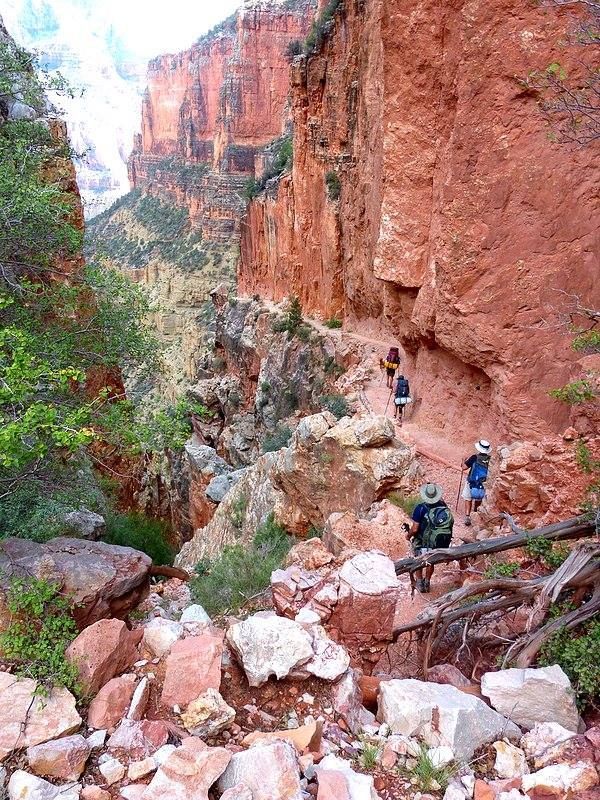
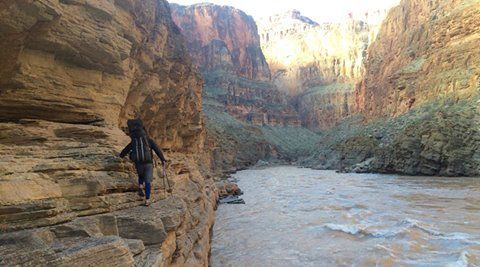
There are two ways to hike at the Grand Canyon – hiking to see the canyon (along the rim) and hiking to experience the canyon (below the rim). By the way, we are focusing here on the South Rim which is open all year round and is the most popular part of the canyon.
Hoofing it on the Awe-Inspiring Rim Trail
Everyone at the South Rim will walk at least a portion of the Rim Trail during a visit to the Grand Canyon. Mostly level and often paved, the path winds for 13 miles from the South Kaibab Trailhead through Grand Canyon Village and out to Hermits Rest. A shuttle bus runs alongside the route to enable any length of hike between viewpoints.
Speaking of those viewpoints – where’s the Colorado River? Yavapai Point offers a slight glimpse of the mighty river but it is not until hiking just west of Bright Angel Lodge along the Hermit Road that you will be awarded fantastic views of the rapids below – a vertical mile below the rim. By the time you reach Monument Creek Vista you can beautiful, long stretches of the Colorado River.
Beneath the Rim
There are three user-friendly trails that are easily accessible to visitors to the main part of the park at the South Rim. Of these, the most famous – and popular – is the Bright Angel Trail, a well-maintained dirt path that snakes six miles down to Plateau Point, a destination renowned for its sunsets. Water is available seasonally and rest houses are available at the 1.5- and 3-mile points that make attractive destinations for turn-around points.
The South Kaibab Trail is also well-maintained and serves up spectacular canyon views on shorter hikes. Cedar Ridge is one and one-half miles from the rim and makes for a vigorous journey for casual hikers. Continuing another 1.5 miles to Skeleton Point offers the first views of the Colorado River and makes for a hearty 6-mile roundtrip journey.
The Hermit Trail at the far western terminus of the South Rim visitor area is unmaintained and steep. Below the rim it splits, offering hikes towards a couple of springs (water must be treated) which make enticing hiking destinations. Since the conditions are tougher than either of the two maintained trails, the Hermit Trail is recommended for experienced desert hikers if you wish to see the Grand Canyon this way.
Those are your best day hike options. At Four Seasons, we are not always in such a hurry to get back to the rim. We have three- and four-day adventures to the canyon floor that connect the South Kaibab and Bright Angel trails and bed down in the historic canyon campgrounds. And a more off-the-beaten-path adventure connects the Hermit and Bright Angel trails.
Frequently Asked Questions
Explore the best ways to experience the Grand Canyon on foot — from leisurely rim walks to challenging below-the-rim adventures at the South Rim.
What is the difference between hiking the Rim Trail and hiking below the rim at the Grand Canyon?
Hiking the Rim Trail offers panoramic canyon views from the top, mostly along a level, paved path. Below-the-rim hikes, such as the Bright Angel or South Kaibab Trails, take you into the canyon itself for a more immersive and challenging experience with steeper grades and changing terrain.
How long is the Grand Canyon Rim Trail?
The Rim Trail stretches about 13 miles from the South Kaibab Trailhead through Grand Canyon Village to Hermits Rest. It’s mostly level, partly paved, and easily accessible via shuttle buses that allow hikers to start and stop at various viewpoints.
What are the best viewpoints along the Rim Trail?
Some of the most scenic viewpoints include Yavapai Point, where you can catch a glimpse of the Colorado River, and the overlooks west of Bright Angel Lodge, such as Monument Creek Vista, which offers stunning views of river rapids a mile below the rim.
Which Grand Canyon trail is best for beginners?
The Bright Angel Trail is the most popular and beginner-friendly below-the-rim option. It’s well-maintained, has water available seasonally, and features rest houses at 1.5- and 3-mile points — perfect for shorter, manageable hikes before turning back.
How difficult is the South Kaibab Trail?
The South Kaibab Trail is steeper than Bright Angel but rewards hikers with some of the best canyon views. A roundtrip to Cedar Ridge (3 miles total) is a solid moderate option, while continuing to Skeleton Point (6 miles total) offers the first glimpses of the Colorado River.
Is the Hermit Trail suitable for all hikers?
No. The Hermit Trail is unmaintained, rugged, and steep. It’s better suited for experienced hikers comfortable with desert conditions and less-defined paths. Hikers should carry plenty of water and treat any spring water before drinking.
Are there multi-day hiking options at the South Rim?
Yes. Multi-day treks connect trails like the South Kaibab and Bright Angel, descending to the canyon floor with overnight stays at campgrounds. Some routes, such as those linking Hermit and Bright Angel trails, provide more remote and adventurous options.
Can I see the Colorado River from the South Rim?
The river isn’t visible from most rim points, but you can catch glimpses at Yavapai Point and excellent views along Hermit Road west of Bright Angel Lodge. For a closer look, hikes below the rim — like to Skeleton Point — reveal dramatic views of the Colorado River.
What’s the best time of year to hike the South Rim?
The South Rim is open year-round, but spring and fall offer the most comfortable conditions. Summer can bring intense heat below the rim, while winter may bring icy patches along the trails near the top. Always check weather and trail conditions before hiking.
Are there shuttles available along Grand Canyon hiking routes?
Yes. A free shuttle bus runs parallel to much of the Rim Trail, allowing visitors to hike sections at their own pace and catch a ride back from various viewpoints — ideal for planning flexible and shorter rim hikes.
Four Season Guides, 506 N Grant St suite o, Flagstaff, AZ 86004, United States
+19285251552
35.19653980, -111.62000560

